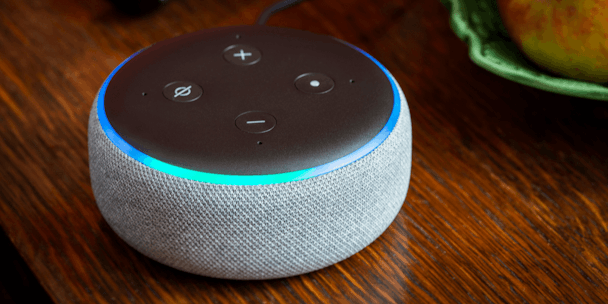Audio's rapid evolution is making a big noise in the advertising world
The rate of digital audio innovation is astounding. In recent years we've seen the emergence of smart speaker technology, podcasts achieving mass scale, and the arrival of audio branding linked to mobile gaming.

Innovation and new tools are emerging to assist brands in achieving better results from their advertising
This rapid evolution means brands now have more creativity and interactivity at their fingertips than ever before. The rising potential for audio advertising to be more data-driven, measurable, and targeted is also an exciting prospect. A development that's reflected in growing levels of investment in digital audio, with ad spend rising 58% in 2021.
Against this backdrop, The Drum, as part of its Audio Deep Dive, partnered with AdTonos, the audio advertising platform, for a video feature that explored a brief history of digital audio, and identified some of the biggest opportunities available now and in the future. To consider these possibilities in more detail, Chris Sutcliffe, The Drum's senior reporter, interviewed Paul Cranwell, vice-president strategic partnerships at AdTonos.
Cranwell introduced some of the key milestones in the development of digital audio - starting with the arrival of DAB (Digital Audio Broadcasting), which meant that for the first time audiences could see the name of the station or advertisers scrolling across the screen of the device at all times. He added: "I think that's when the industry started thinking, what more could audio be doing that's similar to perhaps the video industry?"
Cranwell explained that the launch of DAB was such a long-term positive force in the evolution of digital audio because media buyers and others in the media industry experienced it first-hand as the initial generation of digital radio listeners.
The "busy person's medium"
The discussion turned to more recent innovations and advice for brands looking to use digital audio to be more involved in the lives of listeners. This can be achieved based on an understanding of their behavior, and an appreciation that audio is accessed on varied occasions across a range of devices from phones to smart speakers. Cranwell said: "Marketers need to understand where people are, and what they're doing, when they're doing it. That applies to all media, really, but the reality is, audio is all around us. It's now become the busy person's medium."
This can present challenges in terms of brands achieving standout with their audio as part of a broader brand strategy. Cranwell talked about the need to deliver different options to advertisers against their audio advertising briefs with a range of solutions that cover the various listening states for radio (less engaged, more distracted), podcast downloads (fully engaged, high attention), and mobile gaming (somewhere between the two).
This led to some examples of advertisers who made excellent use of the specific audio context in which their advertising featured. Cranwell played audio samples to bring the executions to life - including Just Eat's campaign featuring Snoop Dogg for achieving "high memory recall", and Netflix using audio branding to engage audiences. He also cited Asda using licensed music to connect - " a really smart way of making a brand sound and feel good."
Cranwell said: "Where would these brands be if they were relying totally on visual? This is about working together. This is how audio enhances."
Following the mention of Netflix, audio branding best practice was the next subject for discussion. Cranwell spoke about how brands understand the impact of sounds on the human brain and are using this insight to build stronger connections with audiences: "If I can associate something, be it a sonic logo or something like that with people, then potentially I've got the opportunity to trigger them at different points without actually having to use that word. It's really just thinking it through in terms of how do I get somebody to feel something?"
Audio in the customer journey
But what about audio's role in wider service delivery for brands? Cranwell focused next on how it's now playing a part in the customer journey through chatbots and other tools, with voice recognition and recreation becoming increasingly advanced. He said that advertisers are also building in greater levels of interactivity with their audio advertising, mentioning Audi as an advertiser that has worked with AdTonos to enable people to book test drives through smart speakers'.
Innovation and new tools are emerging to assist brands in achieving better results from their advertising. For instance, AdTonos has its own "context engines" that can identify and filter podcasts with negative or positive associations for a brand ahead of a campaign.
The discussion concluded with advice from Cranwell for advertisers to achieve the most from their use of digital audio. He said: "Some of the best ads out there, use audio brilliantly - great music, great commercials, great creativity."
This led him to a final recommendation that advertisers start their creative process with the audio solution: "Then do the visual after the audio, because you'll find the visual comes quicker. Whereas if you have the visual, and then you try and apply the audio afterwards it's actually a harder job. You'll find that you save time and effort as well."
Watch the full discussion above.
Content created with:

